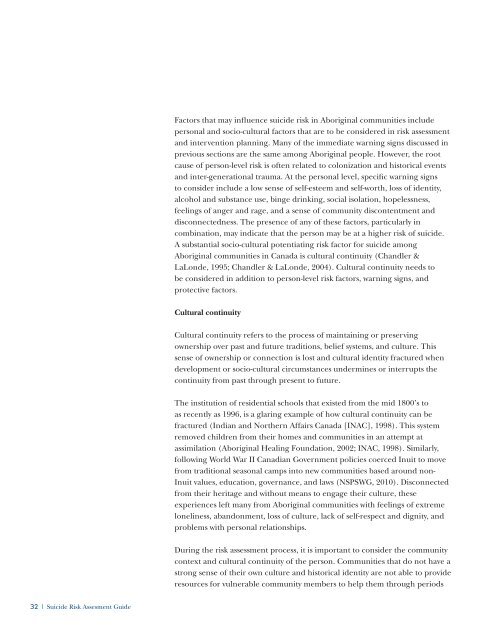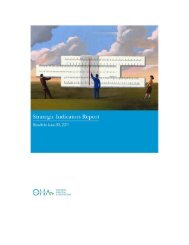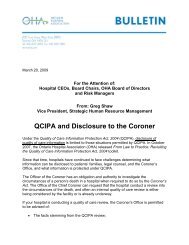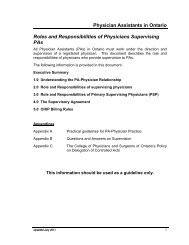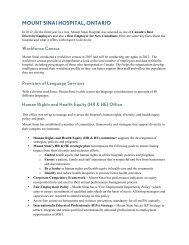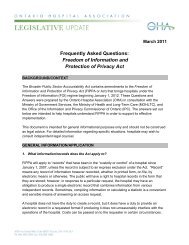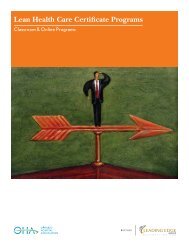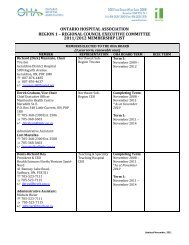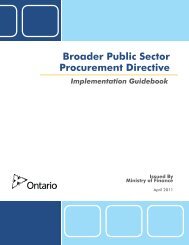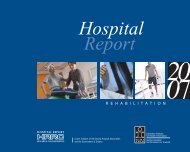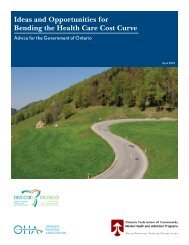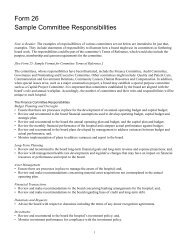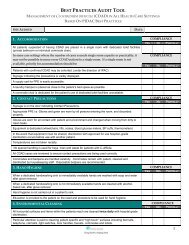Suicide Risk Assessment Guide - Ontario Hospital Association
Suicide Risk Assessment Guide - Ontario Hospital Association
Suicide Risk Assessment Guide - Ontario Hospital Association
Create successful ePaper yourself
Turn your PDF publications into a flip-book with our unique Google optimized e-Paper software.
32 I <strong>Suicide</strong> <strong>Risk</strong> Assesment <strong>Guide</strong><br />
Factors that may influence suicide risk in Aboriginal communities include<br />
personal and socio-cultural factors that are to be considered in risk assessment<br />
and intervention planning. Many of the immediate warning signs discussed in<br />
previous sections are the same among Aboriginal people. However, the root<br />
cause of person-level risk is often related to colonization and historical events<br />
and inter-generational trauma. At the personal level, specific warning signs<br />
to consider include a low sense of self-esteem and self-worth, loss of identity,<br />
alcohol and substance use, binge drinking, social isolation, hopelessness,<br />
feelings of anger and rage, and a sense of community discontentment and<br />
disconnectedness. The presence of any of these factors, particularly in<br />
combination, may indicate that the person may be at a higher risk of suicide.<br />
A substantial socio-cultural potentiating risk factor for suicide among<br />
Aboriginal communities in Canada is cultural continuity (Chandler &<br />
LaLonde, 1995; Chandler & LaLonde, 2004). Cultural continuity needs to<br />
be considered in addition to person-level risk factors, warning signs, and<br />
protective factors.<br />
Cultural continuity<br />
Cultural continuity refers to the process of maintaining or preserving<br />
ownership over past and future traditions, belief systems, and culture. This<br />
sense of ownership or connection is lost and cultural identity fractured when<br />
development or socio-cultural circumstances undermines or interrupts the<br />
continuity from past through present to future.<br />
The institution of residential schools that existed from the mid 1800’s to<br />
as recently as 1996, is a glaring example of how cultural continuity can be<br />
fractured (Indian and Northern Affairs Canada [INAC], 1998). This system<br />
removed children from their homes and communities in an attempt at<br />
assimilation (Aboriginal Healing Foundation, 2002; INAC, 1998). Similarly,<br />
following World War II Canadian Government policies coerced Inuit to move<br />
from traditional seasonal camps into new communities based around non-<br />
Inuit values, education, governance, and laws (NSPSWG, 2010). Disconnected<br />
from their heritage and without means to engage their culture, these<br />
experiences left many from Aboriginal communities with feelings of extreme<br />
loneliness, abandonment, loss of culture, lack of self-respect and dignity, and<br />
problems with personal relationships.<br />
During the risk assessment process, it is important to consider the community<br />
context and cultural continuity of the person. Communities that do not have a<br />
strong sense of their own culture and historical identity are not able to provide<br />
resources for vulnerable community members to help them through periods


